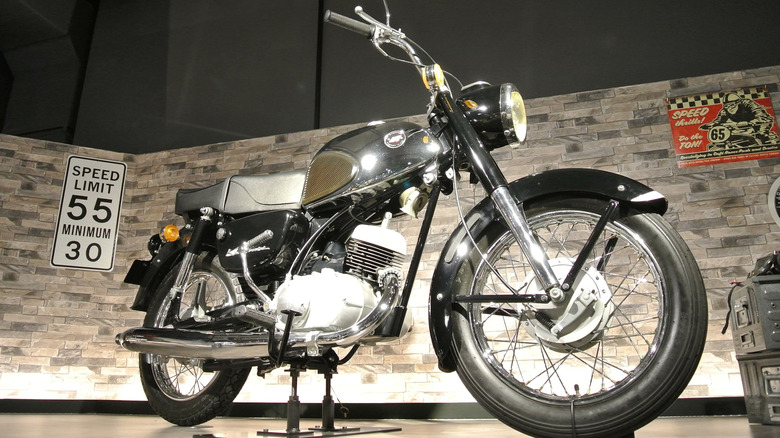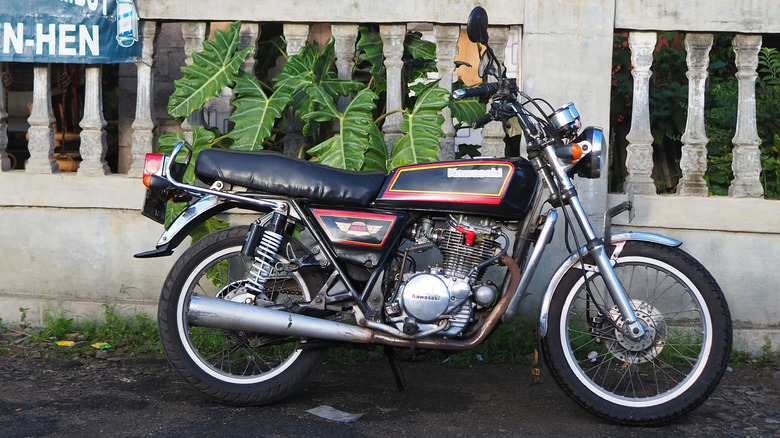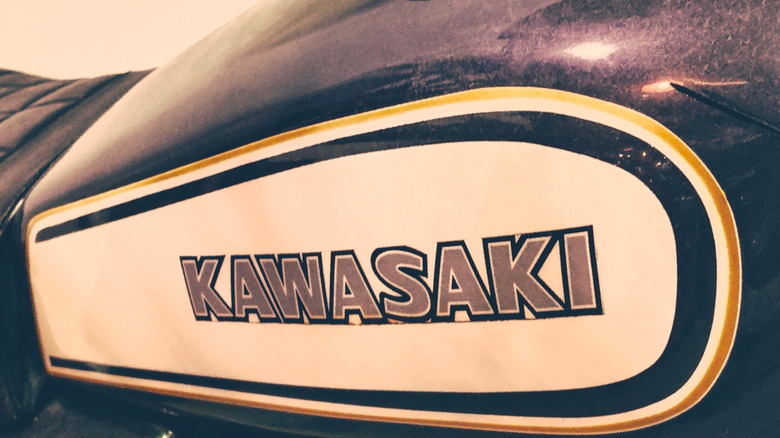Airplane Tech Actually Powered Kawasaki's Very First Motorcycle - Here's How
These days, Kawasaki is best known as a manufacturer of motorcycles with a manufacturing presence across the globe. However, its heritage stretches back to 1878, when the company's founder — Shozo Kawasaki — established a shipbuilding yard in Tokyo. This was the genesis of a business empire that would ultimately produce locomotives, submarines, and aircraft. The aircraft department was established following WWI, after the then-president of Kawasaki, Kojiro Matsukata, was impressed by the use of planes during the war. Kawasaki produced its first airplane in 1922.
Of course, when a company has fingers in so many pies, there are bound to be instances where the technology from one area of expertise can be used in another. This is what happened when Kawasaki entered the motorcycle business. The first Kawasaki motorcycle rolled off the production line in 1960, but the company's involvement in the motorcycle business predates this. Kawasaki's aircraft division had turned its hand to motorcycle engines in 1949, and by 1953, had begun mass production of the air-cooled KE-1 motorcycle engine.
By 1960, the KB-5 version of the engine was being manufactured by the Kawasaki Aircraft Company in Kobe. Originally, this engine featured in the Meihatsu B7, before powering Kawasaki's first bike, the underappreciated Kawasaki B8-125. As might be expected, the expertise gained from developing and manufacturing airplane engines was noticeable in these early engines, notably in their lightweight construction and air cooling.
Air cooling, from planes to motorcycles
Long before flying motorcycles were even an idea, Kawasaki was using aircraft engineering knowledge in its motorcycles. Among these were the lessons learned in air-cooling, which it applied to its motorcycle engines. Air cooling is a simple way to cool engines; it's lightweight and uses a minimum of moving parts. Rather, it utilizes the air that flows around any moving object to cool the engine. This air is channeled through the engine using appropriately designed fins to ensure that the hottest parts of the engine receive adequate airflow. However, the more observant among you will notice one major flaw with this plan: Aircraft move at hundreds of mph, and certainly won't have to stop at a set of traffic lights or similar. This guarantees plenty of airflow throughout the journey. Motorcycles, however, travel at more sedate speeds, and journeys are often stop-start affairs.
These factors mean that simply sticking an aircraft's engine cooling system onto a bike engine is not going to work. The engineers had to figure out how to make air-cooling work efficiently on motorcycle engines. More specifically, the cooling fins had to be redesigned to work with the slower speeds and stop-start nature of motorcycle journeys. Ultimately, it was determined that for the speeds motorcycles travel at, the cooling fins had to be at least a quarter-inch apart.
Built light, built strong
When Kawasaki decided to build its first motorcycles, it carried over more than just cooling strategies. It carried over a wealth of expertise in engineering machines that toed the delicate line between weight and durability. Airplanes needed to be strong enough to handle the stress of flying, but light enough to get off the ground in the first place.
The KE-1 and KB-5 were simple, air-cooled designs that, thanks to design work by Kawasaki's early aircraft engineers, avoided the complexity and weight of liquid-cooled engines. For example, specifications show that the 1962 Kawasaki B8-125 weighed in at a mere 256 pounds dry. This made it competitive and strong enough to compete in and win racing events, while still earning a reputation as a top motorcycle for practical use. That balance between weight and strength, shared with aircraft, highlights how Kawasaki's aviation heritage shaped its earliest motorcycles. Ultimately, while the KB-5 may not be the most powerful engine ever put in a Kawasaki motorcycle, it's likely the most historic and helped to launch one of the most iconic motorcycle brands of all time.


